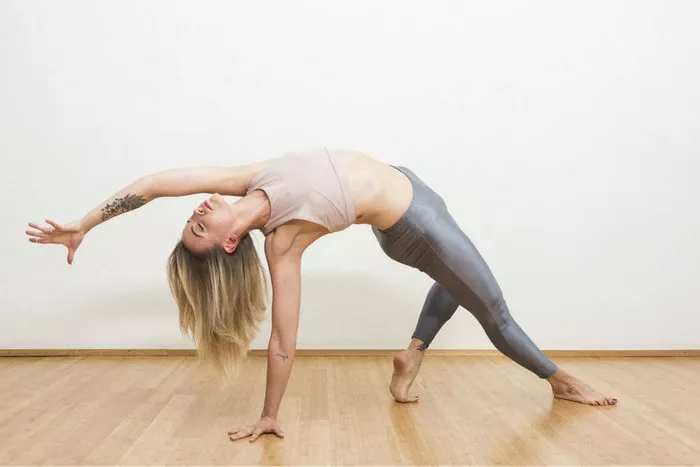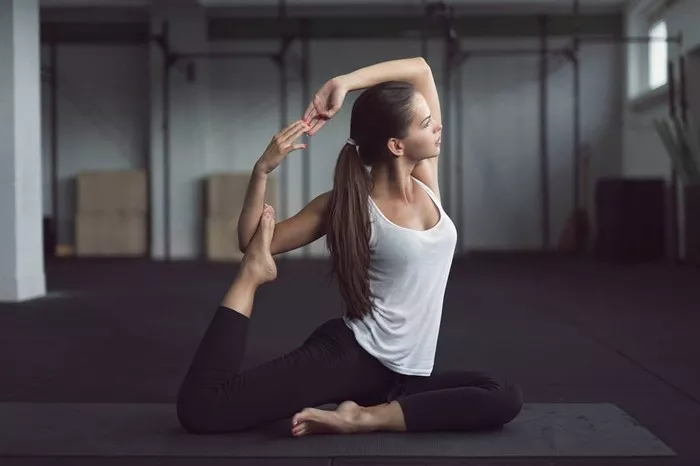Asana Yoga refers to the physical practice of yoga postures, known as “asanas.” The word “asana” comes from the ancient Sanskrit language and means “seat” or “pose.” In the broader context of yoga, asanas are a vital part of the practice, designed to prepare the body for meditation by promoting strength, flexibility, and balance. While yoga encompasses a wide range of practices, including breath control (pranayama), meditation (dhyana), and ethical guidelines (yamas and niyamas), asana yoga specifically focuses on the physical aspect of the discipline.
The History of Asana Yoga
Asana Yoga has deep roots in ancient Indian traditions. The earliest references to yoga postures can be found in texts such as the Yoga Sutras of Patanjali, which date back to around 400 CE. However, the development of asanas as we know them today began much earlier, evolving over centuries through various schools of thought and practice.
Originally, there were only a few seated postures, used primarily for meditation. Over time, as yoga evolved, practitioners developed more complex and varied asanas to enhance physical health and prepare the body for deeper meditation practices. The Hatha Yoga Pradipika, a key text from the 15th century, expanded the number of asanas and emphasized their importance in achieving balance and harmony within the body.
The Purpose of Asanas
Asanas serve multiple purposes in the practice of yoga.
1. Physical Health
One of the primary purposes of asanas is to improve physical health. Each pose targets specific muscles, joints, and organs, promoting strength, flexibility, and overall well-being. Regular practice of asanas can help alleviate physical ailments, improve posture, and increase energy levels.
2. Mental Focus
Asanas also play a crucial role in developing mental focus and concentration. The practice requires practitioners to be fully present in the moment, focusing on their breath, alignment, and balance. This mindful approach helps cultivate mental clarity and reduce stress.
3. Preparation for Meditation
In the traditional context of yoga, asanas are used to prepare the body for meditation. By practicing asanas, the body becomes strong, flexible, and free of discomfort, allowing practitioners to sit in meditation for extended periods without physical distractions. This preparation is essential for achieving a deeper meditative state.
4. Spiritual Growth
While asanas are primarily physical, they are also a tool for spiritual growth. The discipline, focus, and mindfulness required in the practice of asanas can lead to a greater awareness of the body, mind, and spirit. This awareness is a key aspect of the broader journey of yoga, which seeks to unite the individual self with the universal consciousness.
Types of Asanas
There are hundreds of different asanas, each with its unique benefits and challenges. These asanas can be grouped into several categories based on their function and the parts of the body they target.
1. Standing Poses
Standing poses are the foundation of many yoga practices. They help build strength, stability, and balance. Common standing poses include Mountain Pose (Tadasana), Warrior Poses (Virabhadrasana), and Tree Pose (Vrksasana). These poses engage the legs, core, and back muscles, promoting overall body strength and endurance.
2. Seated Poses
Seated poses are often used for stretching and relaxation. They are also essential for practicing meditation and pranayama (breath control). Examples of seated poses include Lotus Pose (Padmasana), Seated Forward Bend (Paschimottanasana), and Bound Angle Pose (Baddha Konasana). These poses focus on opening the hips, stretching the hamstrings, and lengthening the spine.
3. Forward Bends
Forward bends are calming poses that stretch the back, hamstrings, and shoulders. They are often used to relieve stress and promote relaxation. Some common forward bends include Standing Forward Bend (Uttanasana), Child’s Pose (Balasana), and Head-to-Knee Pose (Janu Sirsasana). These poses help improve flexibility and soothe the nervous system.
4. Backbends
Backbends are invigorating poses that open the chest and strengthen the spine. They can be challenging but offer significant benefits for posture and respiratory health. Examples of backbends include Cobra Pose (Bhujangasana), Bridge Pose (Setu Bandhasana), and Wheel Pose (Urdhva Dhanurasana). These poses also stimulate the heart chakra and increase energy levels.
5. Twists
Twisting poses are beneficial for the spine and digestive system. They help improve spinal mobility and detoxify the body by stimulating the internal organs. Common twisting poses include Half Lord of the Fishes Pose (Ardha Matsyendrasana), Revolved Triangle Pose (Parivrtta Trikonasana), and Supine Spinal Twist (Supta Matsyendrasana). These poses also help relieve tension in the back and shoulders.
6. Inversions
Inversions are poses where the heart is positioned above the head. These poses are known for their ability to increase circulation, improve focus, and promote mental clarity. Some well-known inversions include Headstand (Sirsasana), Shoulderstand (Sarvangasana), and Handstand (Adho Mukha Vrksasana). Inversions can be challenging and should be practiced with care, especially for beginners.
7. Balancing Poses
Balancing poses require concentration and coordination. They help develop physical and mental stability, as well as strengthen the core muscles. Examples of balancing poses include Eagle Pose (Garudasana), Dancer’s Pose (Natarajasana), and Crow Pose (Bakasana). These poses challenge the practitioner’s ability to maintain focus and control.
8. Restorative Poses
Restorative poses are gentle, relaxing poses designed to promote deep rest and recovery. They are often used at the end of a yoga session to calm the mind and body. Common restorative poses include Corpse Pose (Savasana), Legs-Up-the-Wall Pose (Viparita Karani), and Reclining Bound Angle Pose (Supta Baddha Konasana). These poses help reduce stress, lower blood pressure, and promote overall relaxation.
See Also: Meditation Asanas in Yoga: Everything You Need to Know
The Benefits of Practicing Asanas
1. Improved Physical Health
Regular practice of asanas leads to improved physical health. The poses strengthen muscles, increase flexibility, and improve balance. This helps prevent injuries, improve posture, and enhance overall physical well-being.
2. Stress Relief
Asanas are effective for relieving stress and tension. The combination of physical movement and mindful breathing helps calm the nervous system, reduce anxiety, and promote relaxation. This makes asanas an excellent tool for managing stress in daily life.
3. Enhanced Mental Clarity
The focus required during the practice of asanas helps improve mental clarity and concentration. As practitioners concentrate on their breath and movements, they develop a heightened awareness of the present moment, which can lead to improved cognitive function and mental sharpness.
4. Better Sleep
Practicing asanas can lead to better sleep quality. The physical exertion and relaxation techniques used in yoga help regulate sleep patterns, making it easier to fall asleep and stay asleep throughout the night.
5. Emotional Balance
Asanas also contribute to emotional balance. The physical practice of yoga helps release pent-up emotions and tension stored in the body. This release can lead to a greater sense of emotional well-being and stability.
6. Spiritual Growth
For many practitioners, asanas are a path to spiritual growth. The discipline, focus, and mindfulness developed through the practice of asanas can lead to a deeper connection with the self and the universe. This spiritual aspect of asanas is an integral part of the broader yoga practice.
Common Misconceptions About Asana Yoga
1. Asana Yoga Is Just Physical Exercise
One common misconception is that asana yoga is merely physical exercise. While the physical aspect is important, asanas are much more than just a workout. They are a tool for developing mindfulness, mental focus, and spiritual growth.
2. You Need to Be Flexible to Practice Asanas
Another misconception is that you need to be flexible to practice asanas. Flexibility is a benefit of practicing yoga, not a prerequisite. Asanas can be modified to suit any level of flexibility, and with regular practice, flexibility naturally improves.
3. Asanas Are Only for the Young and Fit
Some people believe that asanas are only for the young and fit. However, asanas can be practiced by people of all ages and fitness levels. There are many variations and modifications available, making yoga accessible to everyone.
4. Asanas Are Easy
While some asanas may appear simple, the practice requires concentration, strength, and discipline. Holding poses correctly and mindfully can be challenging, even for experienced practitioners. The key is to approach each asana with patience and awareness.
Tips for Practicing Asanas
1. Start Slowly
If you’re new to asana yoga, start slowly. Begin with basic poses and gradually progress to more challenging ones. This approach helps prevent injury and allows you to build a strong foundation.
2. Focus on Alignment
Proper alignment is crucial when practicing asanas. Focus on aligning your body correctly in each pose to avoid strain or injury. If you’re unsure about your alignment, consider taking a class with a certified yoga instructor who can provide guidance.
3. Listen to Your Body
It’s important to listen to your body during practice. If a pose feels uncomfortable or painful, modify it or skip it altogether. Yoga is not about pushing your body to its limits but about finding balance and harmony.
4. Practice Regularly
Consistency is key to reaping the benefits of asanas. Aim to practice regularly, even if it’s just for a few minutes each day. Over time, regular practice will lead to noticeable improvements in your strength, flexibility, and overall well-being.
5. Breathe Mindfully
Breathing is an essential part of asana practice. Focus on maintaining steady, mindful breaths throughout each pose. This helps you stay present and enhances the effectiveness of the practice.
Conclusion
Asana yoga is a powerful practice that goes beyond physical exercise. It is a holistic approach to well-being that integrates the body, mind, and spirit. Whether you’re seeking to improve your physical health, reduce stress, or deepen your spiritual practice, asanas offer a path to achieving your goals. By practicing regularly and mindfully, you can experience the transformative benefits of asana yoga in your life.
Related topics:



















